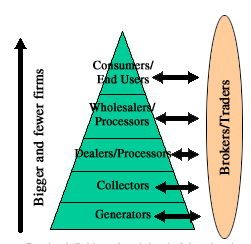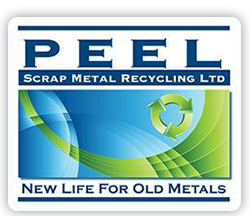Steel: The True Superman of Metals
You might be surprised to learn that steel is the most widely used and most recycled metal on the planet. To give you some idea of the scope, more steel is recycled in the U.S. each year than paper, plastic, aluminum, and glass combined.
Within our economy, the steel industry clearly plays a significant role. Statistics for 2010 indicate that, in Canada, we produced 13 million tons of steel and sold more than 12 billion dollars of product of which more than 6 billion dollars worth was exported. The industry also directly employs 25,000 people and has made capital investments of 2 billion dollars since 2005.
Steel also plays a vital role in many aspects of our individual, daily lives. The buildings we live and work in, the bridges we travel over, the appliances and motor vehicles we use, the trains and ships we travel on, and even the buttons and zippers on our clothing. It is estimated that the average Canadian actually owns about 2000 lbs of steel.
Steel: A Surprisingly Green Metal
Like other metals, steel is very much a renewable resource. We have been recycling it in North America for more than one hundred and fifty years. It is important that we do so because the steel industry actually needs scrap steel in order to produce new steel. This is because there are significant economic benefits. scrap metal prices
Steel is an alloy of iron and carbon. Not only is it cheaper to recycle steel than to make new products from virgin ore that is mined but it is also an environmentally friendlier alternative. Historically, steel has made up the largest category of metals in municipal and industrial waste streams.
For these reasons, steel products generally contain from 25% recycled content, in the case of steel produced in a BOF or Basic Oxygen Furnace, to 100% recycled content in the case of steel produced in an EAF or Electric Arc Furnace. These two types of furnaces are the main technologies used in North America to produce steel.
Recycling Is The Key To Steel’s Re-Use
 As part of the supplier chain, the scrap metal industry has a vital role to play in the steel industry since it bears the responsibility for providing much of the feedstock. The scrap metal industry has been truly innovative in its approach to recycling the many different kinds of “post” and “pre” consumer” scrap steel such as cars, appliances, and steel from manufacturing, construction, and demolition sites. Millions of dollars have been invested in new technologies, machinery, and equipment to address the challenges of efficiently handling and recycling scrap steel and providing products that are in an acceptable form for the steel industry.
As part of the supplier chain, the scrap metal industry has a vital role to play in the steel industry since it bears the responsibility for providing much of the feedstock. The scrap metal industry has been truly innovative in its approach to recycling the many different kinds of “post” and “pre” consumer” scrap steel such as cars, appliances, and steel from manufacturing, construction, and demolition sites. Millions of dollars have been invested in new technologies, machinery, and equipment to address the challenges of efficiently handling and recycling scrap steel and providing products that are in an acceptable form for the steel industry.
The advances in both the scrap metal industry and the steel industry largely go unnoticed despite best efforts to inform people of the important work that is being done. The Canadian Steel Producers Association cites Canada’s steel recycling rate in excess of 60%. This is steel that is being diverted from landfills and other sites thereby reducing the burden on non-renewable resources and retaining much of the energy that was expended initially to produce that steel.
The Steel Industry Works Hard At Being Responsible For its part, the steel industry has made significant strides in reducing its footprint. The American steel industry in particular operates with the lowest energy consumption per ton of steel produced in the world. Between 1990 and 2010, it also reduced its CO2 intensity by 33% and continues to invest heavily in research and development to make it part of the solution.
At Peel Scrap, Steel Is An Important Part of Our Business We are currently in the process of focusing on steel recycling through some of our marketing efforts. In particular, we are talking to garages and automotive dealers, and repair shops, to encourage them to recycle their used auto parts. Used auto parts contain a number of other recyclable metals, apart from steel, such as aluminum, stainless steel, and insulated wire. Find Out More About Steel If you would like to read more about the steel industry, here are some links to get you started.
Steel Recycling Institute www.recycle-steel.org
Canadian Steel Producers Association www.canadiansteel.ca
The American Iron and Steel Institute www.steel.org
Recycling News
This is a new feature we have added to our blog. It will run at least once a month and keep you updated on the top stories in the metal markets and how this news affects scrap metal commodity prices.
The past month has seen a distinct softening of the metal markets. Copper on Comex has dropped from U.S. $3.79 on Oct. 5th, to U.S. $3.47 on Nov. 8th. Aluminum has also softened From the US. $0.95 to $0.86. This trend has been worsened by the fact that metal consumers in Canada, the U.S., and the Far East have not only lowered prices but in many cases have stopped buying altogether. Metal recyclers, unfortunately, have had to follow suit. Though prices of most non-ferrous metals have dropped, most recyclers have continued to buy metals, but in a less aggressive manner. These conditions may continue for some time to come. With world debt issues and softening demand in world markets, caution is the word that will dominate our industry in the near future.

